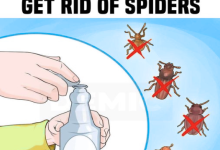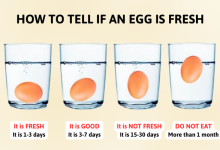Plastic containers can accumulate stains from food, water, and other accidents. Fortunately, it’s not that hard to get these stubborn stains out of your plastic containers. There are three different methods that you can use to wash the inside of a plastic container without detergent. Check out them below.
1. Boiling Water

There are several different options for getting rid of the smell from your plastic containers. One way to get rid of odors is by boiling water in the container for about five minutes.
This will get rid of any smells that are inside. After you finish boiling the water, let it sit out and dry before using it again. If you plan on reheating food in the container, consider pouring boiling hot water into it before packing it with food.
Keep in mind that you should do this right after using soap to wash the container. After washing your plastic container with dish soap and warm water, boil some water it on the stovetop.
Then, let it sit for about twenty minutes before emptying it of the water.
2. Using Vinegar

After you pop it open, check to make sure there are no remnants of food left inside. Give the container a quick preliminary rinse with hot water. Drain and shake out the excess water and place the container on the kitchen counter.
If there’s any dried or sticky residue inside the container, it may help to wipe it out with a paper towel before you begin cleaning.
Image titled Clean Plastic Containers Step 2
For best results, use pure distilled white vinegar. If most of the stains are concentrate around the bottom, you’ll only need to add in an inch or two; if they reach up the sides, fill it to the top. Place the lid back on the container to keep the vinegar from spilling.
Let the vinegar soak for 30 minutes. As it soaks, the acidity of the vinegar will help break down any discoloration present while neutralizing persistent odors. It will also help clear away hard water deposits from previous washings. For heavier messes, you can leave the vinegar in the container for an hour or longer before cleaning it out by hand.
Once half an hour has elapsed, lift the lid and pour out the vinegar. Then, squirt a few drops of liquid dish detergent into the container and go over the inside using a kitchen sponge or stiff-bristled nylon dish brush. The rough surface of the scrubber should be enough to deal with any remaining stains.
Notes:
- If you don’t happen to have any vinegar handy, try using a little diluted rubbing alcohol or hand sanitizer. The alcohol in these products will produce an effect similar to vinegar.
- You may not be able to erase certain stains (like the infamous tomato sauce) entirely. Once these have set up in the plastic, it can be nearly impossible to get them out.
- Avoid scouring the container with anything more abrasive than a sponge. A device like steel wool or pumice stone may leave behind scratches in the plastic.
3. Using Baking Soda

Baking soda is prized for its ability to cut through stains and absorb unwanted odors. It’s also slightly astringent, which will come in handy when it comes time to scrub the container.
Make a paste from baking soda and water: Sprinkle two tablespoons of baking soda into half a cup (120ml) of warm water. Stir the two ingredients together with a spoon until they’re about the same consistency as peanut butter. If the paste seems too thin, add a little more baking soda. If it’s too thick, stir in another half ounce of water at a time until you achieve the desired texture.
Coat the walls of the container with a thin layer of baking soda paste. Scoop whatever is left into the bottom. Try to use all of the mixtures. The paste will have an easier time sticking if the inside of the container is completely dry.
Put the lid on the container and find an out-of-the-way place to leave it. As it sits, the combination of baking soda and water will begin chipping away at messes that have taken hold in the plastic without the need for scouring or scrubbing. In the morning, you can come back and observe the results of the baking soda. (Make sure you give the paste at least an hour or two to take effect.)

Remove the lid and clear the container, using the corner of a washcloth to scrape out the rest of the baking soda. The container should now be stain and odor-free. If you want, you can go one step further and wash it out with soapy water.
After cleaning, drain all water from the container and wipe it down inside and out with an absorbent towel. You can also simply leave it sitting with the lid off and allow it to air dry. Whichever method you choose, the lid should stay off until all moisture has evaporated from inside.
Note: Replacing the lid on a plastic container while it’s still wet can cause mold and mildew to develop.
It is very important to know how to clean plastic containers correctly because they are widely used in our kitchens. Therefore, there is always a small risk that they can get dirty and then start smelling awful. That’s why it is vital not just to properly clean them once, but to keep washing your plastic containers regularly (at least once a week).
Take a note: Which method you choose depends on how severe the stain is, what type of plastic container you have.







